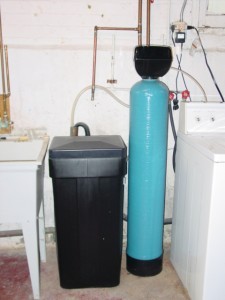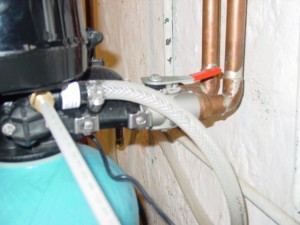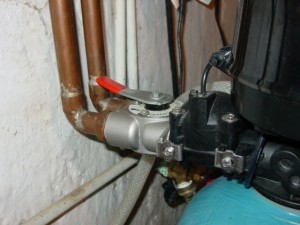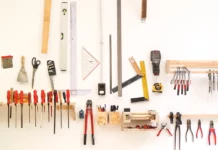Not every home or business needs a water softener. The main determinate is to test your water. You can buy a very inexpensive kit from a local hardware store to test your water’s hardness. Every water system is different, so don’t assume that your water is fine because you know the next town over gets its water from the same place, and their water’s hardness is OK. This is not always the case. Each town is responsible for their own water supply. Our town gets it’s water from two huge wells below our town. They treat the water, but not for hardness, only for Iron. Our hardness is 33, which is very high. The next town over gets their water from Lake Michigan and their water hardness is 0, while a town next to them gets their water from lake Michigan and their hardness is 11.
One of the best ways to tell if your water is hard is by observation and feeling. When you start a load of laundry, after you add soap, does it get nice and bubbly or not really? Do you clothes feel hard or are they soft. Hard water cause less bubbles and even can cause cloths not to be as fluffy. Another way to tell is when you take a shower. Does the soap lather up? If so you probably have a very low water hardness. When you rinse off the soap, does it feel like your skin is nice and smooth, almost slimy. If so, you could have a low water hardness.
A closer look at water softeners
When you measure the hardness of your water, the higher the number, the higher the hardness. Well, you may be asking what causes hardness. The simple answer is minerals in your water system. A water softener catches these minerals and that’s how you get soft water.
What happens, is in the cylinder of the water softener, you have what is called resign. As the water passes over the resign, the minerals stick to the resign and the mineral free water passes onto your faucets. Then, at a specific time, your water softener will rejuvenate. In this process, the water softener pulls salt water from your brine tank and runs it over the resigns to recharge them. Once the resign is recharged, it is now ready to create soft water again.
Installing A Water Softener
Installing a water softener is very easy to do. Most of the time you will already have one in place. If not, you will have to find a good location where you can tap into your water supply, and the softener needs to be close to a drain. Chances are you might have to raise or lower your current water pipes to fit into your new system. You can read our article on soldering copper pipes, which is very easy to do.
Remember to shut off your water supply before you start. Also, if you do not have a shut off valve by your water softener, now might be a good time to install a second on/off valve by your softener. Once your pipes are in line to attach to the softener, make sure you use Teflon tape where the copper pipe fitting attaches to your softener fitting. This will ensure a tight fit and help prevent leaks. Once you attach your water supply to the softener, all you have to do is set the settings on the head of the softener and you should be ready to go. Just remember to turn the water supply back on.
Type of Salt to Use
You can buy blocks of salt or pellets. To this day, we are not sure what is better to use. We have talked with so many plumbers that say you should only use the blocks, while other say only use the pellets. Others say it doesn’t matter. So your guess is as good as ours. Both have been on the market for so long.
Maintenance of a Water Softener System
There is not a whole lot of maintenance on a water softener system, except adding salt. One thing you can do is clean your screen on the head of your water softener. Usually there is a small screw that will come off and the screen is behind there. Another thing you can do is back flush your system every six months. Your system is normally set up and will do this, but occasionally forcing it to back flush can help prolong the life of the resign.
Problems with a Softener
Sometimes you might have a problem with your water softener and usually there are simple solutions to correct these problems.
If your water is no longer soft, you might need to check your water softener gauge as this could have been reset. You might even need to change some of the settings. Just refer to your owner’s manual. Another item to check is your line going from your brine tank to your softener. There very well could be something blocking the water exchange, therefore your system is not rejuvenating.
If you have low pressure, you can easily correct this problem to. This is usually caused by one of two things. First, check your screen. Water softeners have small screens to catch debris, so they do not get caught in the jet. Usually there is a small screw that you can pull out to clean the screen. If the problem still persists, you might have bad resin. Resin is small beads that are in the actual cylinder. What happens is the resin catches all the minerals that make your water hard. When your system rejuvenates, it uses the salt water from the brine tank to recharge the resin and let the process start all over again. Bad resin can cause poor water pressure. You can check your resign by unscrewing the head of the softener and feel the beads inside. If they are still hard, the resin is still good. If you can mash the resin in your hand, then the resin is bad and needs to be replaced, which you can pick up at any water supply store. Remember, sometimes the beads on the top might be good, but the bottom 1/4 might be bad.






